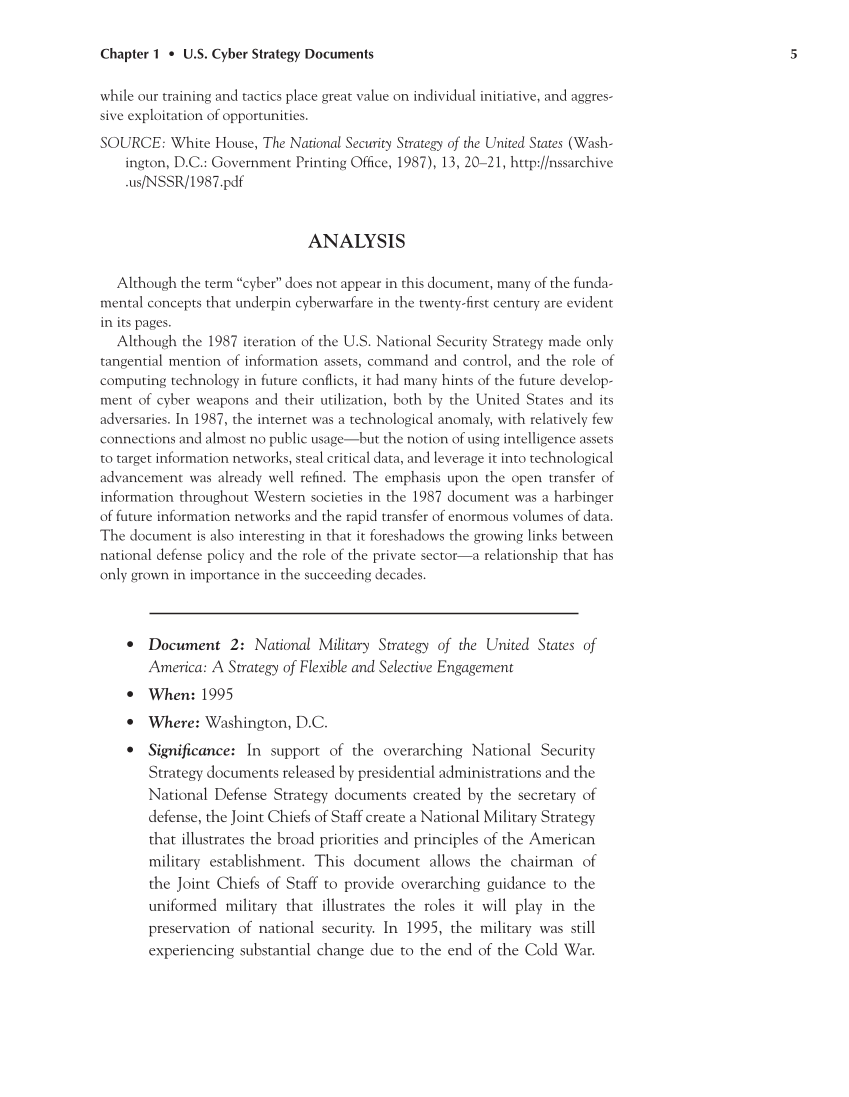Chapter 1 • U.S. Cyber Strategy Documents 5 while our training and tactics place great value on individual initiative, and aggres- sive exploitation of opportunities. SOURCE: White House, The National Security Strategy of the United States (Wash- ington, D.C.: Government Printing Office, 1987), 13, 20–21, http://nssarchive .us/NSSR/1987.pdf ANALYSIS Although the term “cyber” does not appear in this document, many of the funda- mental concepts that underpin cyberwarfare in the twenty-first century are evident in its pages. Although the 1987 iteration of the U.S. National Security Strategy made only tangential mention of information assets, command and control, and the role of computing technology in future conflicts, it had many hints of the future develop- ment of cyber weapons and their utilization, both by the United States and its adversaries. In 1987, the internet was a technological anomaly, with relatively few connections and almost no public usage—but the notion of using intelligence assets to target information networks, steal critical data, and leverage it into technological advancement was already well refined. The emphasis upon the open transfer of information throughout Western societies in the 1987 document was a harbinger of future information networks and the rapid transfer of enormous volumes of data. The document is also interesting in that it foreshadows the growing links between national defense policy and the role of the private sector—a relationship that has only grown in importance in the succeeding decades. • Document 2: National Military Strategy of the United States of America: A Strategy of Flexible and Selective Engagement • When: 1995 • Where: Washington, D.C. • Significance: In support of the overarching National Security Strategy documents released by presidential administrations and the National Defense Strategy documents created by the secretary of defense, the Joint Chiefs of Staff create a National Military Strategy that illustrates the broad priorities and principles of the American military establishment. This document allows the chairman of the Joint Chiefs of Staff to provide overarching guidance to the uniformed military that illustrates the roles it will play in the preservation of national security. In 1995, the military was still experiencing substantial change due to the end of the Cold War.
Document Details My Account Print multiple pages
Print
You have printed 0 times in the last 24 hours.
Your print count will reset on at .
You may print 0 more time(s) before then.
You may print a maximum of 0 pages at a time.
























































































































































































































































































































































































